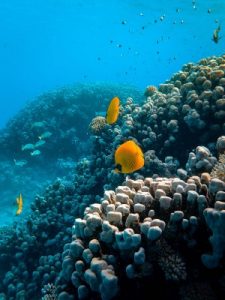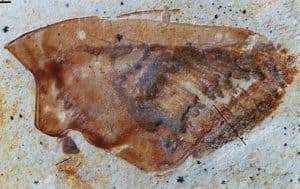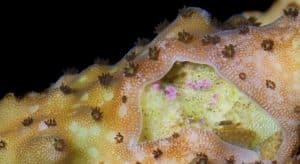One of the things that cause problems in a reef tank by disrupting its environment is flatworms. You can easily deal with majanos and aiptasia, but flatworms will make it really hard for you to get rid of them. But getting rid of them is an absolute requirement if you want to keep your tank inhabitants in a healthy environment.
Six Line Wrasse, Yellow Wrasse, and Leopard Wrasse are good at consuming flatworms in a reef tank. The Spotted Mandarin and The Blue Velvet Nudibranch are also popular as flatworm killers. Certain loaches like the Zebra Loach and goby fish like the Red-Spotted Goby hunt & eat planarian flatworms. Boxer Shrimps such as Macrobrachium Peguense also consume them.
However, there are some other things involved with this issue. If you don’t have proper knowledge about flatworms and how to treat them, you may have to struggle to get rid of them. This article is going to discuss all the things a reef tank owner should know about flatworms.
If you have a reef tank, please go through the rest of the discussion. It will surely help you prepare yourself better for treating the flatworms in your reef tank. Let’s start!
How Do Flatworms Show Up In Your Reef Tank?
 Flatworms usually show up in your reef tank if you have a coral imported from the wild. The retail and wholesale marine facilities remain infested with them until the corals are introduced to a reef tank. They are like hitchhikers on corals as well as live rock.
Flatworms usually show up in your reef tank if you have a coral imported from the wild. The retail and wholesale marine facilities remain infested with them until the corals are introduced to a reef tank. They are like hitchhikers on corals as well as live rock.
They can also get into the reef tank via live food or newly bought tank materials like aquatic plants.
Why Is It Important To Keep Your Reef Tank Free Of Flatworms?
Because of cross-fertilization, flatworms populate really fast. It is vital to keep your reef tank free of flatworms because when there are too many of them in your reef tank, they will irritate your corals.
Flatworms can make corals starve by preventing the light from reaching them in the tank water. Some flatworms can consume the tissue components from the surface of corals. They can cause harm to other fish and shrimps as well.
What Are The Types Of Flatworms?
There are usually different types of flatworms that can be seen in reef tanks. There are some small and some big flatworms which are very benign in nature. They are nothing to worry about.
But you should be careful if there are clams in your reef tank and the small flatworms grow at a rapid pace. In case of big flatworms, there will probably be one of them in the tank. Get it out of the water and kill it. Otherwise, it may cause harm to the clams.
Other than them, there are 2 types of flatworms commonly found in reef tanks. They are:
1. The Rust Brown Flatworm (Convolutriloba Retrogemma):
 This kind of flatworm, also known as the Red Planarian Flatworm, is the most commonly found flatworm in reef tanks. It is tan, rust, or brown in color. It has a brown dot in the lower part of its body. Its size is around ¼ inch. It is oval-shaped, a little elongated; and looks like appendages with two tails.
This kind of flatworm, also known as the Red Planarian Flatworm, is the most commonly found flatworm in reef tanks. It is tan, rust, or brown in color. It has a brown dot in the lower part of its body. Its size is around ¼ inch. It is oval-shaped, a little elongated; and looks like appendages with two tails.
They populate rapidly in tanks that are enriched with nutrients. When they increase at an alarming rate, they start perching on the corals and blocking the light from reaching the tissue of them. According to experts, this type of flatworm lives on the coral tissue’s zooxanthellae and damages the health of the corals.
The Red Planarian Flatworm is also dangerous for young fish and shrimps, and their egg masses in the reef tank.
2. The Acropora-Eating Flatworm:
 It is the second most common flatworm seen in reef tanks. It is an aggressive species of flatworms and causes serious damage to the Acropora corals by eating their tissue.
It is the second most common flatworm seen in reef tanks. It is an aggressive species of flatworms and causes serious damage to the Acropora corals by eating their tissue.
It is whitish in color and oval in shape. It is very hard to see them in display aquariums. It seems to be found mostly on Acropora corals whose polyps are shorter. They are also found on Tricolor and Staghorn species.
As they spread fast and are very harmful, you should take actions as soon as you notice them in your reef tank.
How Do You Notice The Symptoms And Signs?
You can notice the Rust Brown Flatworms on the top of your corals. You should also keep an eye on the low flow areas of the reef tank.
In case of the Acropora-Eating Flatworms, look for rapid tissue loss in your corals. If they start losing their tissue, it will be a symptom that the flatworms are increasing fast in the water. Apart from that, you will also find goldish or brownish egg masses resting in the skeletons of the corals. That is another sign of the increasing population of flatworms.
How Do You Treat The Flatworms?
The wrasses, the Spotted Mandarin, the Zebra Loach, and the Red-Spotted Goby – these work as a natural method of removing flatworms as they eat them.
However, it is important that you do not expect them to remove all the flatworms. Because they will not be able to keep the tank water 100% free of flatworms. They will just decrease the number of flatworms and keep them in check.
The Blue Velvet Nudibranch does an excellent job at doing what the others can’t. They will consume every single one of them. But even that has a problem.
As their entire diet depends on flatworms, once they’ve hunted each of them, they will start to starve and die soon. This means either you have to keep buying them or have a regular supply of flatworms in the reef tank. Apparently, neither of them is a good solution.
Nevertheless, applying a combination of these predators, coral dips, and quarantine will give you a better result and it may even be the best way to keep the flatworms under control by using their predators.
Final Words
The natural method is better than other kinds of preventing methods of removing flatworms. Because if you kill them by using any other method, it will cause a negative side effect. When flatworms die, they release a toxin in the water which can kill the sessile invertebrates, maybe even fish too, if a lot of flatworms die.
The natural method doesn’t have the problem as the predators consume the flatworms. Besides, the only thing that can help you big time regarding this problem is your own vigilance. Just a little of that and the natural method can keep your tank inhabitants perfectly safe.
